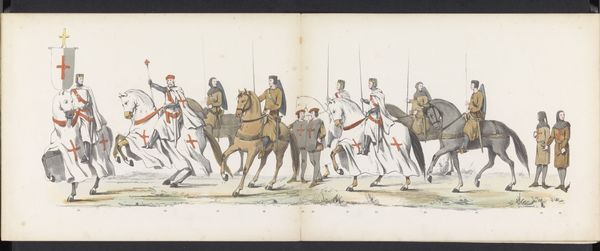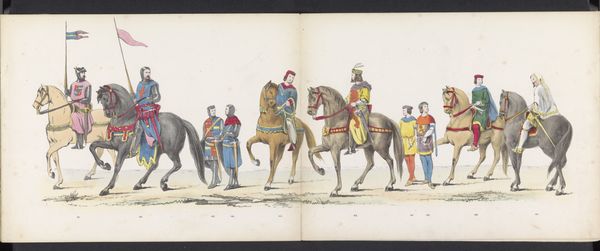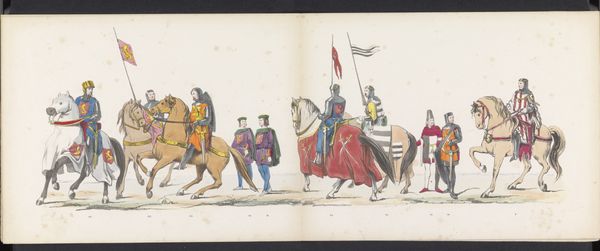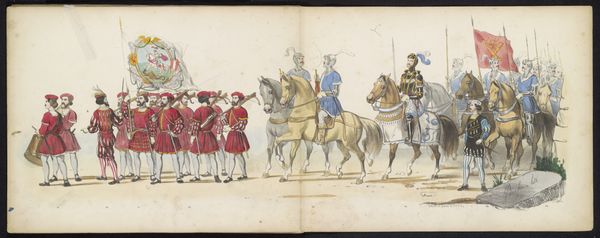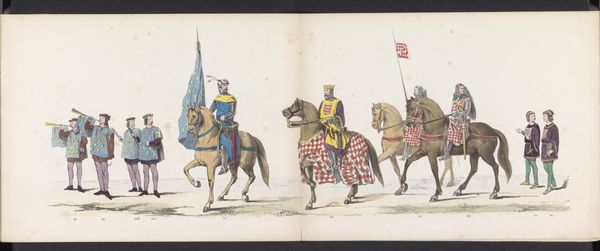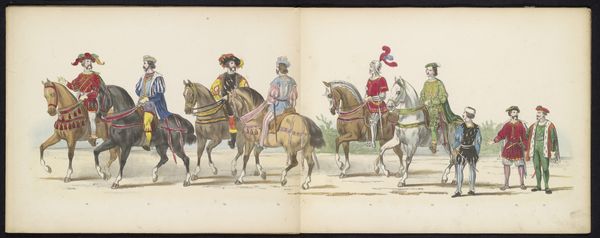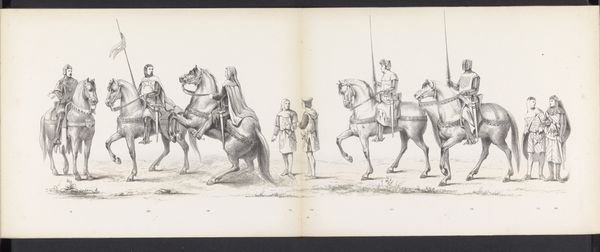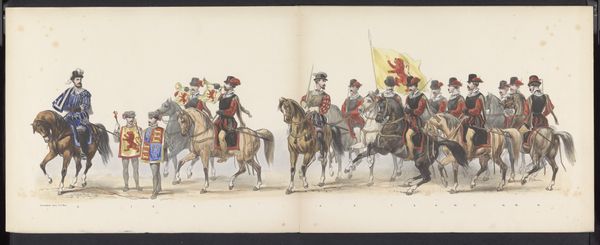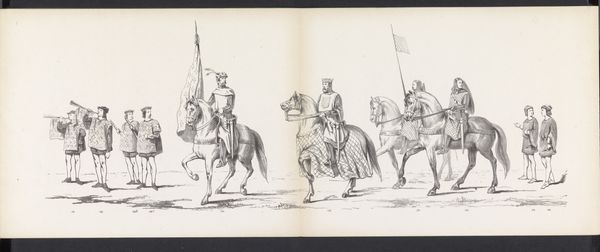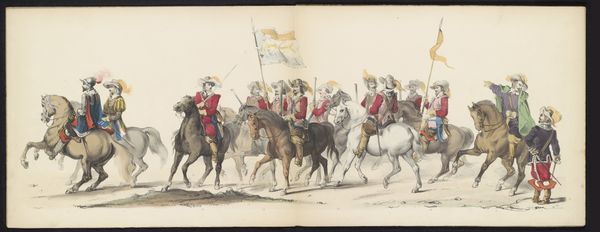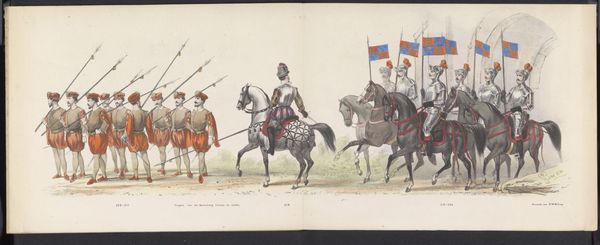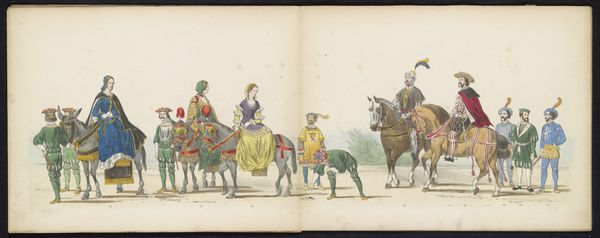
Maskerade van de Leidse studenten, 1865 (plaat 4) 1865
0:00
0:00
print, watercolor
# print
#
landscape
#
figuration
#
watercolor
#
watercolour illustration
#
history-painting
Dimensions: height 275 mm, width 720 mm
Copyright: Rijks Museum: Open Domain
Editor: This watercolor print from 1865, entitled "Masquerade of the Leiden Students, Plate 4" by Jan Daniel Cornelis Carel Willem baron de Constant Rebecque, depicts a procession of figures dressed in historical garb. There's something rather staged about the whole affair. I'm curious, what strikes you when you look at this scene? Curator: Given the title, it's tempting to see this as a performance, but I’m more intrigued by how it positions itself within the history of art and social ritual. The composition consciously references historical processions. Notice how the artist blends historical costume with contemporary representations of student life? Why do you think they are referencing a seemingly medieval past? Editor: Perhaps to give the student life more gravitas, almost as a form of romantic escapism or idealized past. But isn't this simply reinforcing certain elite narratives? Curator: Precisely. These masquerades served specific social functions, reinforcing a sense of identity and community among students but inevitably exclude others.. Whose history is being celebrated here and who is conspicuously absent? The visual emphasis on knights and nobles speaks volumes about the values being promoted within this student culture. Editor: So, rather than a light-hearted frolic, it becomes a statement about power and belonging. Do you see other visual clues beyond the costumes? Curator: Consider the setting: presumably within Leiden. How does situating this historical reenactment within a real, contemporary space impact our reading of it? Is it a celebration of continuity, or an assertion of dominance? What's fascinating here is the subtle way art can participate in broader socio-political projects. Editor: This has certainly shifted my perspective. What seemed like a historical illustration now reveals underlying themes of social identity and power dynamics in student culture at the time. Curator: And that’s where art history's power lies: uncovering those often unseen layers.
Comments
No comments
Be the first to comment and join the conversation on the ultimate creative platform.
